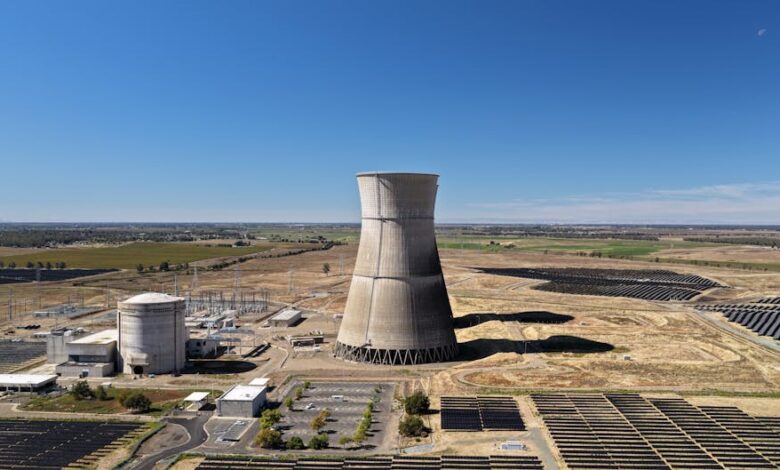The Ebbing Tide: Understanding Big Tech’s Contraction

The tech industry has always been a fascinating dance of innovation and evolution, often characterized by explosive growth and audacious ambition. But recently, a new, more cautious rhythm has emerged. News that Amazon is reportedly planning to cut around 30,000 corporate jobs starting this week isn’t just another headline; it’s a significant tremor in the foundations of Big Tech, echoing similar announcements from other industry giants. It prompts us to ask: what does this mean for the future of work, for Amazon, and for the broader economic landscape?
For many, Amazon has been a symbol of relentless expansion, a company that seemed to grow without limits. A reported workforce reduction of this magnitude isn’t merely a cost-cutting measure; it signals a profound strategic recalibration. It’s a moment that demands a deeper look beyond the numbers, into the forces shaping the decisions of one of the world’s most influential companies, and the very real human impact of such shifts.
The Ebbing Tide: Understanding Big Tech’s Contraction
To grasp the significance of Amazon’s reported corporate job cuts, we need to rewind a bit. The pandemic era saw an unprecedented surge in demand for e-commerce, cloud services, and digital entertainment. Companies like Amazon, with their robust infrastructure and digital offerings, were ideally positioned to capitalize. They hired aggressively, expanding their corporate ranks at a dizzying pace to meet what, at the time, seemed like an insatiable, permanent demand shift. It was a race for talent, resources, and market share.
However, as the world has slowly normalized, and economic headwinds have gathered strength, that hyper-growth phase has begun to cool. We’re seeing a confluence of factors at play: persistent inflation, rising interest rates, and a general tightening of consumer spending are all contributing to a more conservative outlook. Amazon, like many of its peers, appears to be pivoting from a strategy of growth at all costs to one focused more sharply on efficiency and profitability.
A Shift in Strategic Imperatives
This isn’t just about the economy; it’s also about internal strategy. Reports indicate that divisions like Alexa, PXT (People, Experience, Technology), and parts of the retail sector could be particularly affected. The Alexa division, despite its pioneering role in voice AI, has struggled to find sustained profitability, leading to significant losses for years. When market conditions become challenging, companies naturally scrutinize every investment, every team, and every project through a harsher lens.
The goal is to streamline operations, eliminate redundancies, and reallocate resources to areas with clearer, more immediate growth potential or those considered strategically vital for the long term. This isn’t a sign of Amazon’s demise, but rather a reflection of a mature company adjusting its sails to navigate choppier waters. It’s a tough decision, undoubtedly, but one often made by large organizations aiming for long-term resilience and investor confidence.
Beyond the Numbers: The Human and Industry Ripple Effects
While the headlines focus on the numbers – 30,000 jobs – it’s crucial to remember that each number represents a person, a career, and often, a family. These are talented professionals who have contributed to Amazon’s success, now facing an unexpected and challenging transition. The human cost of such large-scale layoffs is immense, impacting not just those directly affected, but also the morale and security of those who remain.
This news also sends a significant ripple through the entire tech ecosystem. Amazon is a bellwether, and its actions often signal broader trends. We’ve already seen similar moves from Meta, Google, Microsoft, Salesforce, and others. When companies of this scale, often seen as perennial hirers, begin to contract their workforces, it suggests a collective recalibration across the industry. It prompts a question for many: if even Amazon is tightening its belt, what does that mean for smaller tech firms or startups?
Navigating the Evolving Tech Job Market
For professionals in the tech sector, this moment serves as a stark reminder of the dynamic nature of the industry. The skills that were in high demand yesterday might be less so tomorrow, as priorities shift towards efficiency, automation, and specialized areas like advanced AI development (beyond consumer-facing products that haven’t proven profitable). Adaptability, continuous learning, and networking become more critical than ever.
It’s not all doom and gloom, though. Historically, periods of industry contraction often precede new waves of innovation. Talent that leaves large corporations often seeds new startups or brings fresh perspectives to existing smaller companies, fostering new growth areas. The tech industry, for all its current challenges, remains fundamentally driven by innovation. This moment could very well be a catalyst for a more sustainable, focused, and ultimately, a more resilient phase of growth.
Amazon’s Future: Leaner, Focused, and Strategic
What does this mean for Amazon’s trajectory? The company is still an undeniable powerhouse in e-commerce, cloud computing (AWS remains a profit engine), and digital advertising. These reported cuts are likely part of a broader strategy to double down on its most profitable and promising ventures, while shedding less efficient or high-cost projects.
This strategic shift underscores a broader trend we’re observing across the tech landscape: the end of the “growth at all costs” era. Investors and boards are increasingly demanding profitability and sustainable business models, rather than just exponential user growth or market share expansion. This means a sharper focus on core competencies, optimizing operational expenditures, and making tougher decisions about where to invest resources.
For Amazon, this could translate into a more agile, more focused organization in the long run. It might mean a renewed emphasis on its cash cows, like AWS, while carefully experimenting with new initiatives. It’s a move that, while painful in the short term, is designed to ensure the company’s competitive edge and financial health in a rapidly changing global economy. The company will likely emerge from this period leaner, but also potentially stronger and more strategically aligned.
Conclusion: Resilience in an Era of Change
The reported corporate job cuts at Amazon are more than just an isolated event; they are a powerful indicator of the evolving landscape within the tech industry and the global economy. They reflect a necessary recalibration after a period of unprecedented growth, influenced by shifting market demands and economic realities. For Amazon, it’s a strategic move towards a more efficient and profitable future. For the broader tech workforce, it’s a moment that underscores the importance of adaptability, continuous skill development, and a keen eye on emerging opportunities.
While challenging, these periods of change often catalyze innovation and lead to new pathways for growth. The tech industry has always been characterized by its dynamism, its capacity for reinvention, and its ability to attract and develop exceptional talent. As the dust settles, those who embrace learning and agility will be best positioned to thrive in this next chapter, contributing to the continued evolution of an industry that, despite its occasional contractions, remains at the forefront of shaping our future.





